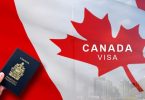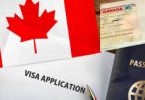Canada Spousal Sponsorship or Sponsoring Boyfriend-Girlfriend
Canada’s spousal sponsorship program is one of the most important pathways for Canadian citizens and permanent residents to reunite with their loved ones from abroad by granting them permanent residency (PR). This program plays a vital role in keeping families together and providing a means for Canadians to build their lives in Canada with their spouses, common-law partners, or conjugal partners. With recent enhancements, including two new automation tools designed to speed up the process, the spousal sponsorship program is now more efficient and accessible than ever.
Whether you’re planning to bring your spouse, common-law partner, or conjugal partner to Canada, understanding the intricacies of the process is essential. This comprehensive guide will explore what spousal sponsorship means, the differences between common-law and conjugal partners, eligibility criteria, financial undertakings, required documents, application steps, and what to do if your sponsorship is refused.
What Does Spousal Sponsorship Mean?
Spousal sponsorship in Canada is a process through which a Canadian citizen or permanent resident can sponsor their spouse, common-law partner, or conjugal partner to become a permanent resident of Canada. The primary goal of this program is to facilitate family reunification by enabling Canadians to live in Canada with their loved ones. It’s a program designed with a focus on compassion, recognizing the fundamental importance of family in Canadian society.
Categories of Relationships
The Canadian spousal sponsorship program recognizes three main categories of relationships:
- Spouses: Legally married partners.
- Common-Law Partners: Partners who have lived together in a conjugal relationship for at least 12 consecutive months.
- Conjugal Partners: Partners who have been in a relationship for at least one year but are unable to live together due to circumstances beyond their control, such as immigration barriers.
Understanding the specific category your relationship falls under is crucial for ensuring that your application is processed correctly.
Common-Law vs. Conjugal Partners: Key Differences
When it comes to spousal sponsorship, it’s important to differentiate between common-law and conjugal partners. While both categories are recognized under Canada’s immigration laws, they have distinct definitions and requirements.
Common-Law Partners
A common-law partnership is defined as a relationship where two individuals have lived together in a conjugal relationship for at least 12 consecutive months. To qualify as a common-law partner, you must provide evidence of cohabitation, such as joint bank accounts, shared leases, or utility bills. The relationship must be genuine, and both partners must intend to live together permanently in Canada.
Conjugal Partners
Conjugal partners are individuals who have been in a committed relationship for at least one year but are unable to live together due to circumstances beyond their control. These circumstances may include immigration barriers, cultural or religious reasons, or legal constraints. Unlike common-law partners, conjugal partners do not need to provide evidence of cohabitation, but they must demonstrate that they have a genuine and committed relationship. Conjugal partner sponsorship is typically used in situations where the couple cannot meet the requirements for marriage or common-law status, often due to external factors.
Basic Eligibility Criteria for Spousal Sponsorship
To successfully sponsor a spouse, common-law partner, or conjugal partner to Canada, both the sponsor and the sponsored person must meet specific eligibility criteria.
For the Sponsor:
- Status in Canada: The sponsor must be a Canadian citizen, permanent resident, or a registered Indian under the Canadian Indian Act.
- Age: The sponsor must be at least 18 years old.
- Residency: If the sponsor is a permanent resident, they must reside in Canada. Canadian citizens living abroad must demonstrate their intention to return to Canada once the sponsored person becomes a permanent resident.
- Financial Ability: The sponsor must not be receiving social assistance for reasons other than a disability and must demonstrate the financial ability to support the sponsored person.
- Previous Sponsorship: The sponsor should not have been sponsored as a spouse themselves within the last five years or be in default of any previous sponsorship undertakings.
For the Sponsored Person:
- Relationship Status: The sponsored person must be legally married to, in a common-law relationship with, or be a conjugal partner of the sponsor.
- Age: The sponsored person must be at least 18 years old.
- Genuine Relationship: The relationship between the sponsor and the sponsored person must be genuine and not entered into primarily for immigration purposes.
- Admissibility: The sponsored person must not be inadmissible to Canada on grounds such as criminality, health, or security.
Meeting these eligibility criteria is essential for the success of your sponsorship application.
Apply Also: H-1B U.S. Work Visa: Opportunities for Foreign Nationals and Their Families
Financial Undertaking: Your Responsibility as a Sponsor
When you sponsor your spouse, common-law partner, or conjugal partner to Canada, you are committing to a financial undertaking. This undertaking is a legal obligation to provide financial support for the sponsored person’s basic needs, including food, clothing, and shelter, as well as any healthcare not covered by public health services.
Duration of the Financial Undertaking
The length of the financial undertaking depends on the type of relationship:
- Spouse or Common-Law Partner: 3 years from the date the sponsored person becomes a permanent resident.
- Dependent Child: 10 years or until the child turns 25, whichever comes first.
It’s important to note that even if your relationship with the sponsored person ends, the financial undertaking remains in effect for the entire duration.
Required Documents to Strengthen Your Case
A strong and well-documented application is crucial for the success of your spousal sponsorship. Providing thorough and accurate documentation will help to prove the genuineness of your relationship and your eligibility for sponsorship.
Apply Also: 12 Easy jobs for 13-year-old (See the full list of part-time and full-time jobs)
Key Documents for the Sponsor:
- Proof of Status in Canada: Copies of your Canadian passport, citizenship certificate, or permanent resident card.
- Proof of Financial Ability: Recent tax assessments, pay stubs, or bank statements to demonstrate your financial ability to support the sponsored person.
- Previous Sponsorship Undertakings: If applicable, documents related to any previous sponsorship undertakings.
Key Documents for the Sponsored Person:
- Proof of Relationship: Marriage certificate (for spouses), evidence of cohabitation (for common-law partners), or proof of a committed relationship (for conjugal partners).
- Identity Documents: Passport, birth certificate, and any other identification documents.
- Police Certificates: From any country where the sponsored person has lived for more than six months since the age of 18.
- Medical Examination: Results of a medical examination by an approved physician.
- Photos and Communication Records: Photos of the couple together, communication records (emails, chat logs), and affidavits from friends and family attesting to the genuineness of the relationship.
Organizing these documents and presenting them clearly in your application will significantly improve your chances of approval.
How to Apply for Spousal Sponsorship
The process of applying for spousal sponsorship involves several steps. Ensuring that each step is completed correctly and thoroughly is key to a successful application.
Step 1: Gather All Necessary Documents
Before starting the application process, gather all the required documents for both the sponsor and the sponsored person. Make sure to double-check the specific requirements based on your relationship type.
Step 2: Complete the Application Forms
The application package for spousal sponsorship includes several forms that must be completed by both the sponsor and the sponsored person. These forms include:
- IMM 1344: Application to sponsor, sponsorship agreement, and undertaking.
- IMM 5533: Document checklist for spousal sponsorship.
- IMM 0008: Generic application form for Canada.
- IMM 5669: Schedule A – Background/Declaration.
- IMM 5406: Additional family information.
Carefully follow the instructions for each form, ensuring that all information is accurate and complete.
Step 3: Pay the Application Fees
The application fees for spousal sponsorship include:
- Sponsorship fee: CAD $85
- Principal applicant processing fee: CAD $545
- Right of permanent residence fee: CAD $575
- Biometrics fee: CAD $85
- For any dependent child: $175 per child.
Fees must be paid online, and proof of payment should be included in your application package.
Step 4: Submit the Application
Once all forms are completed, and the required documents are gathered, submit your application online by filling out all the online forms listed in step 1. Be sure to keep copies of all forms and documents for your records.
Step 5: Wait for Processing
Processing times for spousal sponsorship applications vary depending on the applicant’s country of residence and other factors. On average, processing can take 12 months or more. During this time, you may be asked to provide additional documents or attend an interview.
Apply Also: 20 Best Online Jobs That Pay Weekly Or Faster
What to Do if Your Sponsorship Application Is Refused
Receiving a refusal on your spousal sponsorship application can be devastating, but it’s important to know that there are options available to you if this happens.
Understanding the Reason for Refusal
The first step is to understand why your application was refused. Common reasons for refusal include:
- Insufficient proof of a genuine relationship
- Inadmissibility due to criminality or health issues
- Errors or omissions in the application forms
- Failure to meet eligibility criteria
You will receive a letter explaining the specific reasons for the refusal.
Options for Refused Applications
If your spousal sponsorship application is refused, it’s important to remember that you have several potential avenues to explore:
Judicial Review
If you believe that the refusal was due to an error in law or procedure, you can request a judicial review by the Federal Court of Canada. This process involves asking the court to examine the decision to ensure that it was made fairly and according to the law. Judicial reviews are more complex and typically require the assistance of a legal professional, as the court will not reassess the facts of your case but will instead look at whether the immigration officer followed proper procedures.
Reapply
If your application was refused due to missing documents or insufficient evidence, reapplying might be your best option. In this case, you would need to carefully review the reasons for refusal, gather any additional evidence required, and submit a stronger application. This could involve providing more thorough documentation to prove the genuineness of your relationship or addressing any concerns raised by the immigration authorities in the initial refusal.
Apply Also: Top 10 Accelerated Nursing Programs in Florida for International Students
Appeal the Decision
You can appeal the refusal to the Immigration Appeal Division (IAD) within 30 days of receiving the refusal letter. An appeal is a formal process where you have the opportunity to present your case and provide additional evidence to support your claim. During the appeal, you may also have the chance to explain any misunderstandings or clarify information that may have led to the refusal. The IAD will then make a determination based on the evidence presented.
Each of these options has its own set of procedures, timelines, and complexities, so it’s crucial to act quickly and seek legal advice if necessary to ensure you choose the best path forward.
Canada’s spousal sponsorship program is a lifeline for families seeking to reunite in Canada, but the process can be complex and requires careful attention to detail. Understanding the differences between common-law and conjugal partners, meeting the eligibility criteria, gathering the required documents, and knowing your options if your application is refused are all crucial steps in ensuring a successful sponsorship application.
By following the guidelines outlined in this article, you can navigate the spousal sponsorship process with confidence, bringing you one step closer to reuniting with your loved one in Canada.






